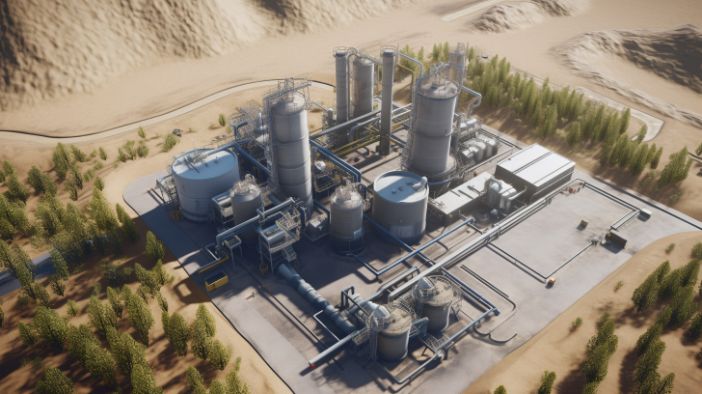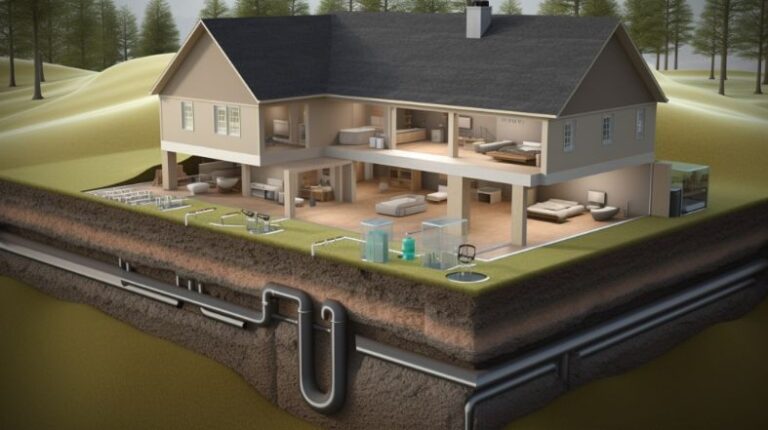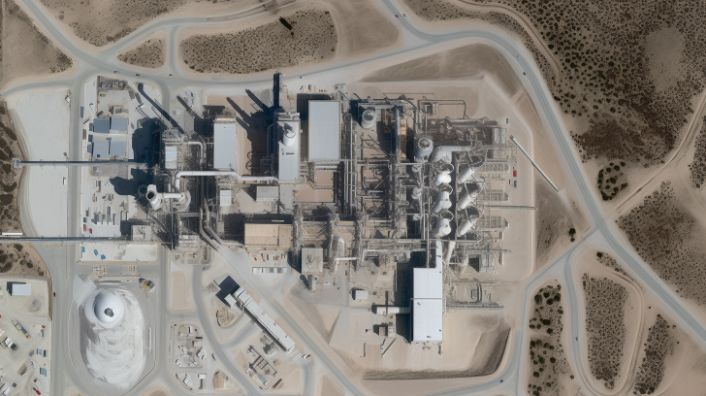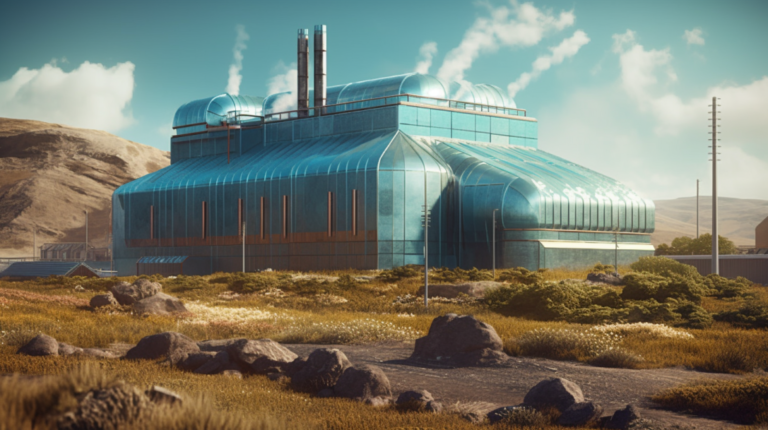The Cost of Installing a Geothermal Energy System: A Comprehensive Guide
Geothermal energy is a renewable energy source that generates power by harnessing heat from the earth’s core. This energy is gained by digging deep under the earth’s surface and harnessing the natural heat created by the earth’s core. Geothermal energy is a clean and sustainable energy source with significant advantages over typical fossil fuels.

One of the primary advantages of geothermal energy is that it is a renewable energy source. Unlike fossil fuels, which are finite and will ultimately deplete, geothermal energy is continually supplied by natural processes on Earth. This indicates that it is a long-term energy source that can be utilized for future generations.
Another advantage of geothermal energy is that it is a clean energy source. Unlike fossil fuels, which emit hazardous pollutants when burned, geothermal energy emits no emissions and has a low environmental effect. As a result, it is a suitable energy source for countries seeking to minimize their carbon footprint and battle climate change.
This article will look at the advantages of geothermal energy and how it can be utilized to power homes and businesses. We’ll look at the many types of geothermal energy systems available, how they function, and the benefits and drawbacks of each. We will also investigate the possibility of geothermal energy being a major source of renewable energy in the future.
Table of Contents
Factors that Affect the Cost of a Geothermal Energy System
Geothermal energy systems are gaining popularity as a green and cost-effective alternative to heat and cool houses. However, installation costs might vary substantially based on a number of factors.

House Size and Heating Load
The size of the home and the needed heating load are two important criteria that influence the cost of a geothermal system. Larger homes need larger systems, which can raise installation costs. Furthermore, residences with greater heating loads will require more energy to heat, which will raise the cost.
Geothermal System and Loop System Types
The ultimate cost is also affected by the type of geothermal system and loop system employed. Closed-loop systems are more expensive to install than open-loop systems because they require more materials and manpower. Furthermore, due to the additional drilling required, vertical loop systems are often more costly than horizontal loop systems.
Other Considerations
Location, accessibility, and installation permissions are all considerations that might impact the cost of a geothermal system. Homes in places with high labor costs or tough terrain may need more personnel and equipment, raising the cost. Obtaining permissions for installation might also increase the final cost.
Finally, various factors might affect the cost of a geothermal energy system. When evaluating the cost of installation, homeowners should consider the size of their home, heating load, kind of system, loop system, location, accessibility, and permissions necessary. Homeowners may make educated judgments regarding the most cost-effective and environmentally friendly method to heat and cool their homes by carefully examining these aspects.
Upfront Costs Associated with Geothermal
Geothermal energy is a sustainable energy source that is gaining popularity with homeowners. However, before selecting to construct a geothermal system, it is critical to understand the related upfront expenditures.
Geothermal’s typical upfront expenditures include equipment and installation fees. The equipment costs vary based on the size of the system and the type of heat pump employed. Installation costs vary based on the intricacy of the installation and the property’s location.
The cost of heat pumps contributes significantly to the entire cost of installation. Ground-source heat pumps cost more than air-source heat pumps, but they are more efficient and last longer. Heat pumps can cost anywhere from $5,000 to $10,000, depending on the design and size of the system.
Homeowners that install geothermal systems can take advantage of rebates, incentives, and tax credits. The federal government provides a tax credit equal to 26% of the entire cost of installation, which can greatly lower the initial expenditures. Some jurisdictions additionally provide extra incentives and rebates, which can help to lower the cost of installation even more.
While geothermal energy may appear to have significant upfront expenses, the long-term benefits of this renewable energy source make it a worthy investment. Because geothermal systems have a lifetime of up to 50 years, homeowners may enjoy decreased energy bills and fewer maintenance expenses for decades. Furthermore, geothermal systems increase the value of your property, making it a more appealing alternative for future purchasers.
To summarize, while the initial expenditures of geothermal may appear intimidating, the long-term advantages and possible savings make it a wise investment for homes. Geothermal energy is becoming a more accessible choice for people wishing to minimize their carbon footprint and save money on their energy bills, thanks to the availability of rebates, incentives, and tax credits.
Operating Costs of Geothermal Energy Systems
Geothermal energy systems are gaining popularity as a green and cost-effective alternative to existing energy sources. However, it is critical to understand the operational expenses of these systems.

The operational expenses of geothermal energy systems are heavily influenced by energy efficiency. These systems are extremely efficient, with COPs of up to 5.0, implying that for every unit of energy needed to power the system, up to five units of energy are generated. This results in cheaper energy bills and running costs.
Another key factor to consider is maintenance expenditures. While geothermal systems require less maintenance than typical HVAC systems, it is still vital to undertake regular maintenance to guarantee maximum performance and lifetime. This involves routine filter replacements, inspections, and heat exchanger cleaning.
Despite the initial expense of installing a geothermal system, there are considerable long-term cost reductions to be achieved. Geothermal energy may save homes up to 70% on heating and cooling expenditures, according to the US Department of Energy.
It is critical to engage with a competent technician who can perform regular maintenance and repairs as needed to maintain and care for your geothermal system. Homeowners should also take precautions to ensure their system functions efficiently, such as maintaining the space surrounding the outside unit clean of trash and ensuring enough insulation in the home.
Geothermal Energy Installation Cost versus Traditional Heating/Cooling Systems
When it comes to heating and cooling your house, you have several alternatives. Geothermal energy and standard heating and cooling systems are two prevalent options.
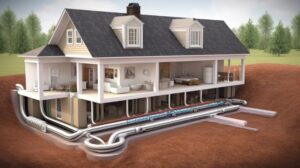
Initial and ongoing costs
The initial cost of building a geothermal system is greater than the cost of installing a regular system. A geothermal system, on the other hand, has much reduced running expenses. Traditional systems rely on fossil fuels, which fluctuate in price. Geothermal systems, on the other hand, heat and cool your home using the constant temperature of the ground, resulting in cheaper energy costs.
Long-Term Investments
While the initial cost of a geothermal system may be greater, homeowners should expect to save much in the long run. According to the US Department of Energy, converting to geothermal energy may save homes up to 70% on heating and cooling bills. This means that the initial investment will eventually pay for itself.
Increasing the Value of Your Home
In addition to financial savings, geothermal systems may increase the value of your property. A geothermal system is a long-term investment that can boost your home’s market value. Because of the energy savings and environmental benefits, potential buyers are typically ready to pay extra for a property with a geothermal system.
Environmental Advantages
Geothermal energy is a renewable form of energy that emits no greenhouse gases. The use of fossil fuels in traditional heating and cooling systems contributes to climate change. Homeowners may lower their carbon footprint and help protect the environment by adopting geothermal energy
Conclusion
Geothermal energy systems are a possible replacement for traditional heating and cooling systems. They are very efficient, ecologically friendly, and can deliver considerable long-term cost savings.
We have highlighted the advantages of geothermal energy systems throughout this article, including its capacity to cut carbon emissions, low maintenance requirements, and extended lifespan. We’ve also stressed the necessity of understanding the cost of geothermal energy systems, which can be more expensive to install than regular systems but can save you a lot of money in the long run.
When making heating and cooling selections, people and businesses must consider the long-term benefits of geothermal energy systems. While the initial expenditure is larger, the cost savings and environmental advantages make it beneficial.
Finally, we encourage readers to think about geothermal energy as an alternative to typical heating and cooling systems. We can lower our carbon footprint and contribute to a more sustainable future by doing so.


